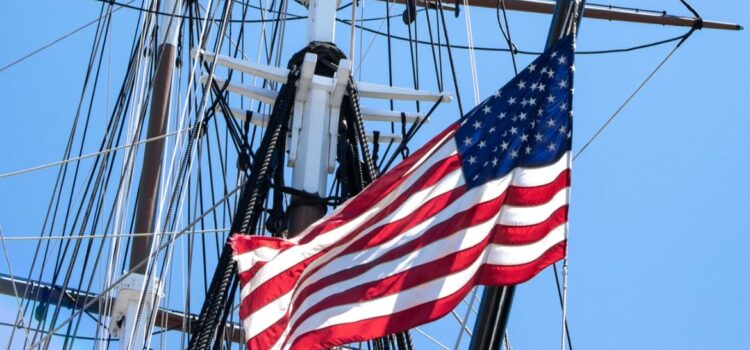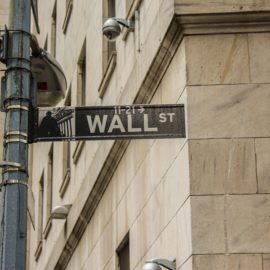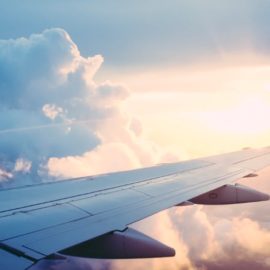

This article is an excerpt from the Shortform book guide to "The 1619 Project" by Nikole Hannah-Jones. Shortform has the world's best summaries and analyses of books you should be reading.
Like this article? Sign up for a free trial here .
What role did slavery play in the colonization of the United States of America? Was America really built on the backs of the enslaved?
According to Nikole Hannah-Jones, an American investigative journalist and the author of The 1619 Project, the mainstream story of the colonization of the U.S. is based on half-truths, hypocrisies, and inaccurate information. The American colonists didn’t succeed due to their hard work. The survival and prosperity of American colonists were almost entirely due to the labor of slaves.
Here’s how slaves built America.
The Building of the First American Colonies
In 1619, the first boat of enslaved Africans arrived in Jamestown, Virginia, and they began clearing land and building homes for British colonists. They then taught colonists how to grow rice and protect themselves from diseases like smallpox, saving them from starvation and sickness.
(Shortform note: Experts credit an enslaved man named Onesimus with teaching European physicians in Boston how to inoculate themselves against smallpox. His method, which was an early form of vaccination common in West Africa, was to insert pus from an infected person into an incision on another person’s arm or leg. This gave the other person a less severe case of smallpox, and if they survived, it would make them immune to the disease.)
| Starvation in Early Colonial America Historians confirm the threat of starvation in the early colonies, adding that food shortages were so extreme in Jamestown in 1609-1610 that some colonists reportedly turned to cannibalism to survive. In 2012, archaeologists discovered the body of an English girl who had been butchered for meat, confirming these reports. However, these experts split from Hannah-Jones’s argument, explaining that indentured servants from Europe were the ones to initially end starvation—they expanded the colonial workforce enough that colonists could plant and harvest sufficient crops to get them through the winter, which was the biggest factor reducing the threat of starvation. But, they agree that colonists learned how to grow two of the most important crops—rice and corn—from enslaved Africans and Native Americans, respectively. These crops replaced the European staple of wheat and barley, which didn’t grow well in North America. So ultimately, enslaved Africans did play a major role in establishing food security for the colonists. |
Enslaved Africans also built the infrastructure of the early American economy—they cleared land, built plantations, picked cotton, and laid down the railroads that transported cotton to the North where it was made into textiles. Cotton was the nation’s most valuable export and the foundation of American wealth.
(Shortform note: Historians add that slave labor fueled the early American economy and global trade. Slave-produced cotton provided over half of US export earnings—this was the source of America’s original wealth. And 75% of the Southern railroads that transported this cotton were also built by enslaved people. Further, American slaves produced 60% of the global supply of cotton along with coffee, rum, sugar, and tobacco—the basis of global trade during the 18th and 19th centuries.)
And their labor wasn’t the only contribution enslaved Africans made to the American economy—their bodies were also bartered, traded, and mortgaged to build the fortunes of wealthy white people in the North and South. This trading and mortgaging established Wall Street and made New York City the financial capital of the world.
(Shortform note: Other experts add that in addition to the bartering, trading, and mortgaging of slaves, “slave insurance policies” also played a large role in Wall Street’s success. Insurance firms like New York Life, AIG, and Aetna—top companies on the New York Stock Exchange—acquired major wealth by selling policies that compensated enslavers if an individual that they had bought was lost, injured, or killed in transit.)
Ultimately, without the forced labor of enslaved Black Americans, the colonization of the U.S. may not have even been possible, and the rapid growth and prosperity of the nation wouldn’t have been possible.

———End of Preview———
Like what you just read? Read the rest of the world's best book summary and analysis of Nikole Hannah-Jones's "The 1619 Project" at Shortform .
Here's what you'll find in our full The 1619 Project summary :
- A reframing of American history with the institution of slavery at its core
- How democracy as we know it today was largely built by enslaved Blacks
- The racist institutions that persist today that originated from slavery






